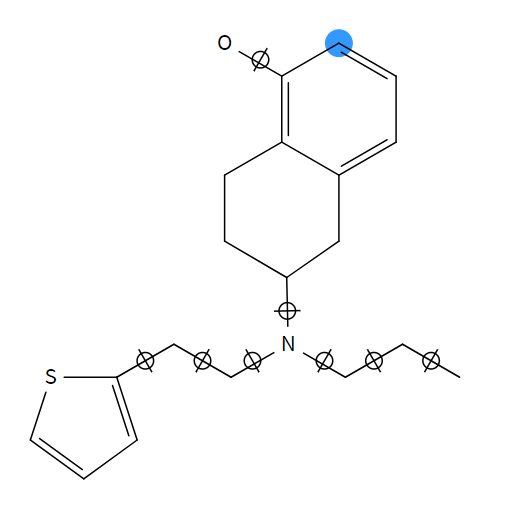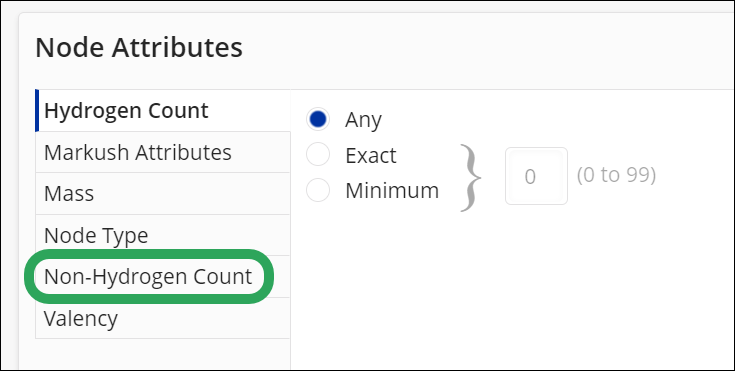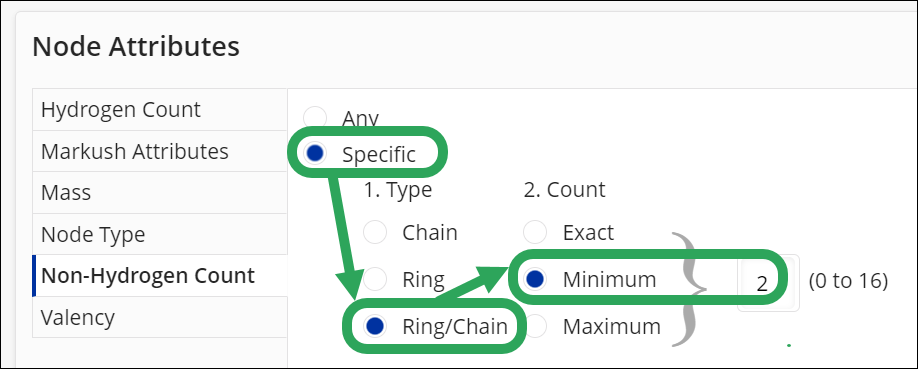
The non-hydrogen count is the number of non-hydrogen atoms attached to a specific atom (node). Existing connections are considered (e.g., every carbon atom in a cyclohexane ring has a non-hydrogen attachment count of 2, specifically 2 Ring non-hydrogen attachments.)
You can allow for or force substitution in a CSS (closed substructure search) or SSS (substructure search) by altering the non-hydrogen count of one or more atom nodes.
In the query structure below, the blue highlighted node is connected to two other carbon atoms with ring attachments, so its non-hydrogen count is Ring: 2. Note: A node's bond value does not contribute to the non-hydrogen count value (e.g., the blue-highlighted node has one single and one double bond, but the non-hydrogen value is still Ring: 2.)

If we right-click on the node, click Non-Hydrogen Count, and then set the count to a minimum of Ring/Chain: 2, we will also be able to retrieve substances with a substituent at this position.


Note: This value should not contradict (and therefore must include) the number and type of connections drawn in the structure query.
Learn More
Drawing and Editing Structures